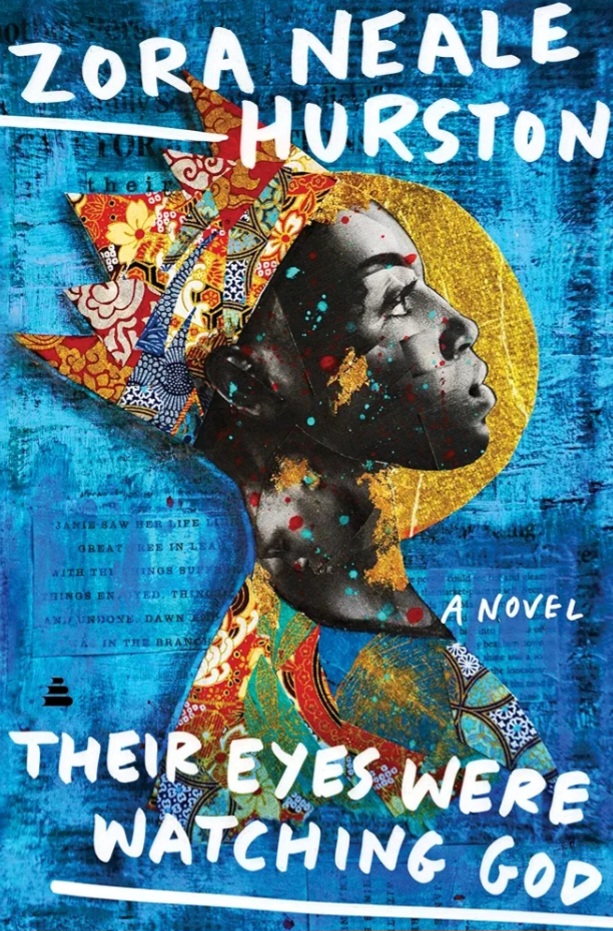Published in 1937, Zora Neale Hurston’s Their Eyes Were Watching God stands as a seminal work in both African American and feminist literature. More than just a novel, it’s a profound exploration of identity, love, and independence set against the backdrop of early 20th-century African American life in the South. However, to truly appreciate the depth and resonance of the novel, one must understand the remarkable woman behind it—Zora Neale Hurston. An anthropologist, folklorist, novelist, and key figure in the Harlem Renaissance, Hurston led a life as rich and complex as her characters, making her both a literary and cultural icon.
Zora Neale Hurston: A Life in Context
Zora Neale Hurston was born on January 7, 1891, in Notasulga, Alabama, but she often claimed Eatonville, Florida—one of the first all-Black towns incorporated in the United States—as her hometown. Her father, John Hurston, was a Baptist preacher, carpenter, and mayor of Eatonville, and her mother, Lucy Ann Hurston, was a schoolteacher. Eatonville would later serve as a significant inspiration for the setting in much of Hurston’s work, including Their Eyes Were Watching God.
The early death of her mother and subsequent unstable family life forced Hurston to become self-reliant at a young age. She worked in various capacities—maid, waitress, and performer—before completing her high school education. She later attended Howard University, where she co-founded the school’s newspaper and began writing short stories. In 1925, Hurston won a scholarship to Barnard College, where she studied anthropology under Franz Boas, one of the most prominent anthropologists of the time. This academic training deeply influenced her ethnographic approach to storytelling.
Anthropology and the Folkloric Voice
Hurston’s background in anthropology played a crucial role in her literary career. Her deep respect for African American folk traditions, dialects, and oral storytelling informed her narrative style and thematic focus. Unlike many of her contemporaries, who sought to uplift the race by emphasizing middle-class respectability and assimilation, Hurston celebrated Black vernacular culture unapologetically.
Her fieldwork in the American South and the Caribbean yielded important anthropological studies such as Mules and Men (1935), a collection of African American folktales, and Tell My Horse (1938), which chronicled her research into Caribbean religions like Haitian Vodou and Jamaican Obeah. These works blend scholarship and narrative in ways that presaged contemporary creative nonfiction and ethnographic writing.
Their Eyes Were Watching God: A Revolutionary Novel
Their Eyes Were Watching God was written in just seven weeks while Hurston was conducting fieldwork in Haiti. The novel follows the life of Janie Crawford, a Black woman who defies societal expectations and embarks on a journey of self-discovery through three marriages and various personal trials.
The novel was groundbreaking for its time for several reasons:
A Black Female Protagonist
At the heart of the novel is Janie—a complex, independent, and evolving character who seeks love, autonomy, and voice. This was a radical portrayal in an era when African American literature often featured male protagonists or female characters who were one-dimensional or symbolic.
Use of Dialect
Hurston’s use of Black Southern dialect was both celebrated and criticized. While it authentically captured the rhythms and cadences of her characters' speech, it was also derided by some contemporaries who saw it as a reinforcement of racial stereotypes. However, today this stylistic choice is recognized as a powerful tool that lends authenticity and dignity to the cultural experiences Hurston sought to preserve.
A Feminist Perspective
Janie’s journey is deeply feminist in nature—not in the ideological sense common today, but in its depiction of a woman seeking her own path, her own voice, and her own definition of fulfillment. She rejects the roles imposed upon her by patriarchal and societal norms, and through each failed relationship, she grows closer to self-realization.
Nature and Spirituality
The novel also contains deep symbolic layers, particularly in its representation of nature and God. The title itself comes from a powerful moment during a hurricane, when Janie and her partner Tea Cake confront the raw force of nature and fate. It suggests a humility before the cosmos and a recognition that human agency has its limits.
Critical Reception and Rediscovery
Despite its brilliance, Their Eyes Were Watching God was not widely appreciated upon its release. It received mixed reviews—some praised its poetic language and folkloric richness, while others, including prominent Black male intellectuals like Richard Wright, criticized it. Wright famously wrote that the novel “carries no theme, no message, no thought,” accusing Hurston of failing to tackle racial injustice directly.
In a time when African American literature was expected to serve explicitly political purposes, Hurston’s celebration of individual identity, particularly female identity, was seen as frivolous or even regressive. As a result, the novel faded into obscurity, and Hurston herself died in poverty in 1960, buried in an unmarked grave in Fort Pierce, Florida.
However, the novel experienced a dramatic revival in the 1970s and 1980s, thanks in large part to the efforts of Alice Walker. Walker, an acclaimed novelist in her own right (The Color Purple), published an essay titled “In Search of Zora Neale Hurston” in Ms. magazine in 1975, reigniting interest in Hurston’s life and works. She even arranged for a marker to be placed at Hurston’s grave.
Today, Their Eyes Were Watching God is widely regarded as a classic and is a staple in American literature courses.
Other Notable Works
While Their Eyes Were Watching God remains her most famous work, Hurston wrote several other important books, each contributing to her legacy as a pioneering voice in American letters.
Jonah’s Gourd Vine (1934)
This was Hurston’s first novel and is loosely based on her parents’ marriage. It chronicles the life of John Pearson, a charismatic preacher whose moral weaknesses mirror those of Hurston’s own father. The novel showcases her early narrative strengths and her commitment to portraying the lives of Black Southerners with nuance and empathy.
Moses, Man of the Mountain (1939)
In this ambitious reimagining of the biblical Moses, Hurston blends African American folklore with biblical narrative and political allegory. The novel explores themes of leadership, deliverance, and liberation through a distinctly Black cultural lens.
Seraph on the Suwanee (1948)
Hurston’s final novel, and her only one to feature white protagonists, Seraph on the Suwanee was a commercial failure and critically neglected for decades. However, recent scholarship has revisited the novel’s exploration of class, gender, and identity among poor white Floridians, recognizing its experimental nature and subtle complexities.
Relationships and Influence
Zora Neale Hurston’s literary career was closely entwined with the Harlem Renaissance, a vibrant cultural movement in the 1920s and 1930s that celebrated Black artistic expression. During this time, she became associated with figures like Langston Hughes, Countee Cullen, and Alain Locke.
Her relationship with Langston Hughes was particularly notable—and complicated. The two collaborated on a play, Mule Bone, but their friendship deteriorated amid creative and legal disputes. Despite the fallout, both remained central to the artistic flowering of the period.
Hurston was also mentored and supported by white patron Charlotte Osgood Mason, a wealthy woman who funded several Harlem Renaissance artists. However, the relationship came with strings attached; Mason demanded creative control, which ultimately strained their partnership. This dynamic reflects a broader tension in the history of Black arts patronage—between financial support and artistic autonomy.
Legacy and Impact
Zora Neale Hurston’s legacy today is more secure than ever. She is celebrated not only as a novelist but also as a pioneer of Black feminist thought, a cultural anthropologist, and a preserver of African American folklore. Her influence can be seen in the work of countless writers, including Alice Walker, Toni Morrison, Maya Angelou, and Tayari Jones.
Academic programs have embraced her as a foundational figure in African American studies, women’s studies, and cultural anthropology. Moreover, her works continue to inspire adaptations, including the 2005 Oprah Winfrey-produced TV film adaptation of Their Eyes Were Watching God, starring Halle Berry.
In 2018, her nonfiction work Barracoon: The Story of the Last "Black Cargo" was finally published—decades after she wrote it. Based on interviews with Cudjo Lewis, one of the last known survivors of the transatlantic slave trade, the book showcases Hurston’s ethnographic sensitivity and literary skill. Its release added a new dimension to her already impressive oeuvre.
Conclusion
Zora Neale Hurston was a woman ahead of her time—brilliant, complex, and fiercely independent. Their Eyes Were Watching God remains her crowning achievement, a novel that transcends time and genre to speak to the universal human quest for selfhood, love, and freedom. But beyond this singular masterpiece lies a body of work that challenges, illuminates, and celebrates the richness of Black life in America.
As we continue to grapple with questions of race, gender, identity, and cultural memory, Hurston’s voice remains not only relevant but necessary. She dared to write Black life as she knew it—vibrant, flawed, beautiful, and utterly human. And for that, generations of readers are eternally grateful.
|
|







